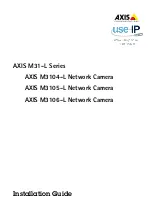
Introduction to Hotwire DSL Routers
1-3
6371-A2-GB20-00
March 2000
Hotwire DSL Router Features
The Hotwire DSL routers contain the following features.
H
IP routing with:
— NAT (Network Address Translation).
— DHCP Server (Dynamic Host Configuration Protocol) and DHCP Relay
Agent.
— A full set of IP filters.
H
High-speed Internet or intranet access.
H
Diagnostics. Provides the capability to diagnose device and network
problems and perform tests.
H
Device and Test Monitoring. Provides the capability of tracking and
evaluating the unit’s operation.
H
Remote Firmware Download. Provides easy setup and activation of
firmware upgrades from a remote location.
H
Security. Provides multiple levels of security, which prevents unauthorized
access to the DSL router.
H
Console Terminal Interface. Provides an interface for configuring and
managing the DSL router.
Service Subscriber
The Service Subscriber is the user (or set of users) that has contracted to receive
networking services (e.g., Internet access, remote LAN access) for the end-user
system from one or more NSPs (Network Service Provider). Service subscribers
may be:
H
Residential users connected to public network services (e.g., the Internet)
H
Work-at-home users connected to their corporate intranet LAN
H
Commercial users at corporate locations (e.g., branch offices) connected by
a LAN to other corporate locations or connected to public network services
The Hotwire DSL Router must be installed at the customer premises to provide
the end user with access to any of the above services.
NOTE:
If you would like more information on DSL-based services, applications, and
network deployment, refer to Paradyne’s The DSL Sourcebook. The book
may be downloaded or ordered through Paradyne’s World Wide Web site at
www.paradyne.com/library.













































